Dry Rot
In the UK, the term “dry rot” refers to outbreaks of wood decay by the fungus Serpula Lacrymans. Unlike wet rot, for which relatively simple procedures are adequate for control, the successful remedial treatment of dry rot may require elaborate and sometimes costly control measures. It is important therefore, in the first instance, that an outbreak is identified correctly. There are a number of diagnostic features but sometimes the presence of several of them may be required for positive identification.
All types of wood rot can be difficult to detect in there early stages. This is particularly true with dry rot because it will mostly develop out of sight, behind panelling and plaster or beneath floorboards.
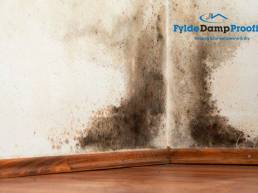
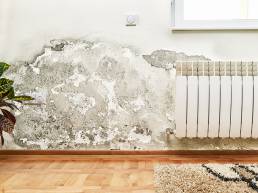
Dry rot will attack both hardwoods and soft woods or other cellulosic materials as a food source. The fungus grows most rapidly on wood that has a moisture content of 30% or above, but not saturated.
Dry rot CAN NOT derive any nourishment from none organic materials such as brickwork or plaster. However, dry rot strands are able to grow on and through these materials. With this in mind, should an outbreak of Serpula Lacrymans be identified close to a partition wall with a neighbouring property, it would prove best practice to notify the owner of the neighbouring property of the issues present.
Recognisable symptoms of dry rot include;
Shrinkage and cuboidal cracking of affected timbers. Most notably, skirting boards.
Spore dust present in the vicinity, red in colour and can often be mis-identified as brick dust.
Sporophore’s or fruiting bodies. These are fleshy and soft but rather tough. The surface is red with white edges, with shallow pores or ridges.
Mycelium, will be found in damp, dark places such as beneath floor boards. The mycelium appears cotton wool like. White or silver in colour, with flashes of yellow or lilac.
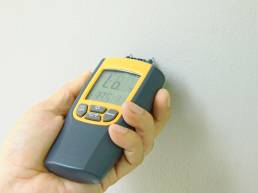
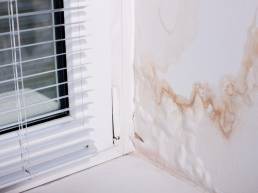
Wet Rot
Coniophora Puteana and Coniophora Marmorata (brown rots) together are the most common cause of rot in timbers which have been soaked by water leakage.
Both fungi produce strands that, when matured, are a brown to blackish colour. They are commonly seen on the surface of decayed wood and occasionally spread across wall surfaces.
Visual damage to wood includes cracks, most commonly along the grain of the wood, the cracks are usually less deep than those of dry rot.
Wet Rot prefers moisture levels between 30% – 50%. During remedial treatments for wet rot, it is vital to introduce rapid drying to prevent an outbreak of wet rot.
Wood destroying insects, or beetles are commonly known as “woodworm” due to the beetle beginning life as a larva.
Eggs are laid by female insects, usually in cracks, splits and/or pores of the wood. The eggs are very small, often invisible to the unaided eye. The eggs usually hatch within a short period of laying.
The larva hatches from the egg and it is at this stage where most of the damage to the timber occurs. The larvae stage varies in duration from a few weeks, to many years depending on the species. In most timber insects, it is the longest-lived stage.
Eventually the larva undergoes a dormant period. During this period the larva ceases to feed and profound changes in form and structure occur (metamorphosis). This is known as the Pupa stage. The Pupa resembles a mummified, pale yellow beetle covered with a transparent skin, which darkens in colour as the time for adulthood emergence approaches.
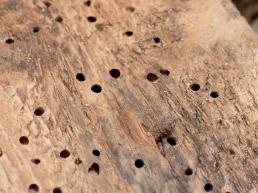
At the completion of metamorphosis, the adult insect emerges from the Pupal skin. It bores its way out of the timber, leaving an exit hole which is usually round or oval in shape, varying in size according to the species of insect. These exit holes are usually the first visual sign of infestation.
Emergence of adult insects from timber may sometimes be delayed for a period of months after metamorphosis.
The moisture content of timbers would usually be in excess of 20% for an insect infestation to occur.
If caught early enough, ie, prior to the loss of structural integrity then timbers affected by insects can be chemically treated.
Treatments vary according to the purpose of the affected timbers. Structural timbers such as roof purlins and structural beams are often treated with a deep penetrating paste.
